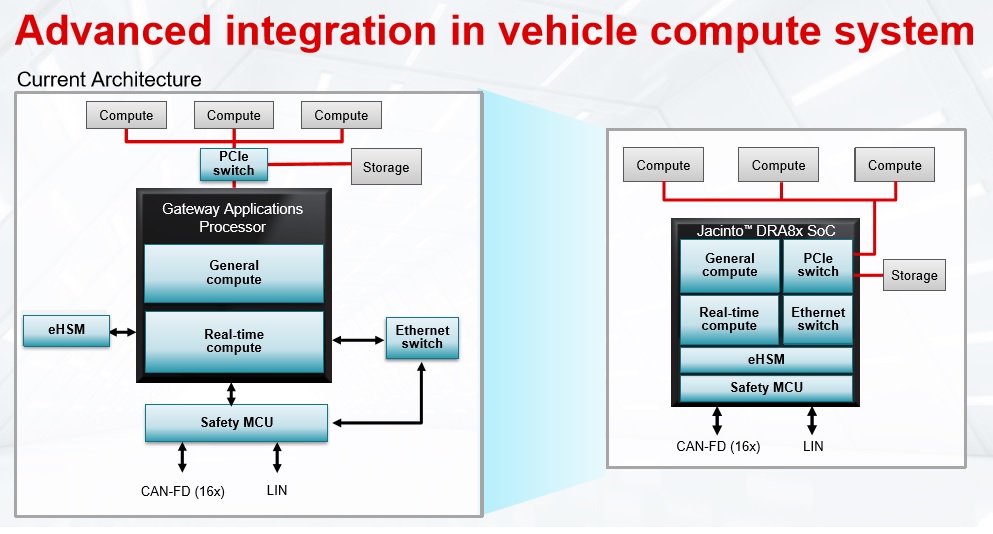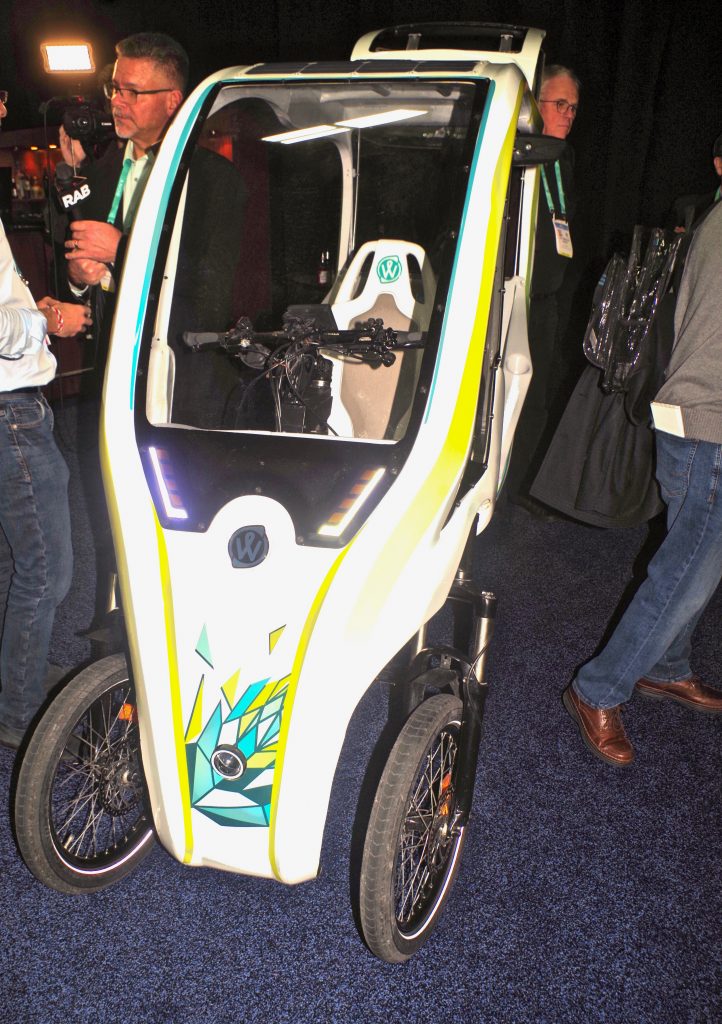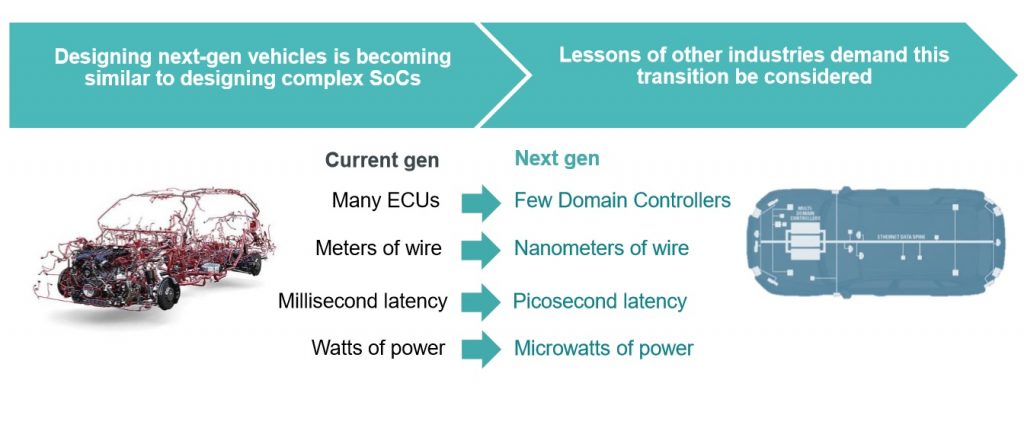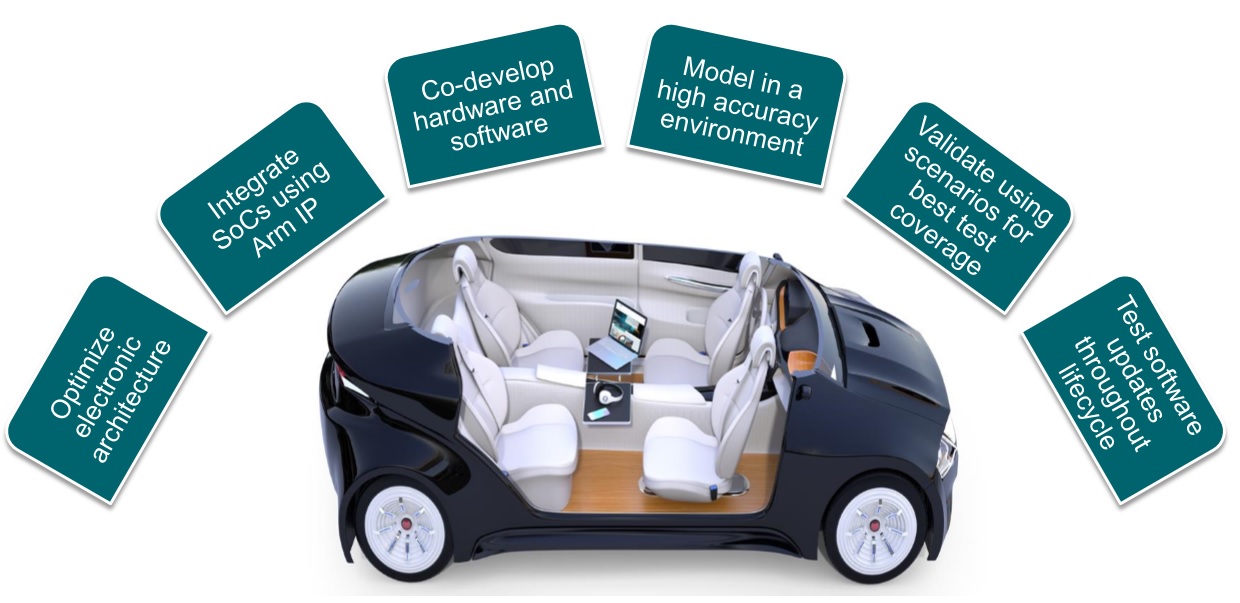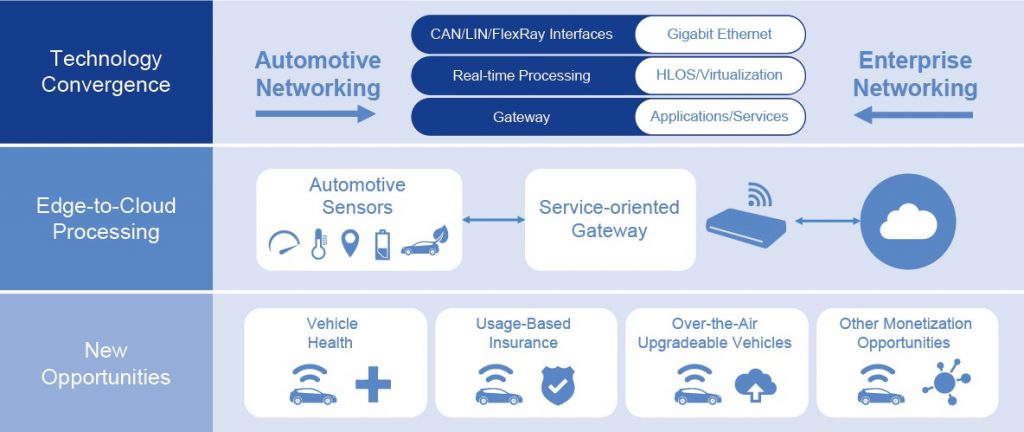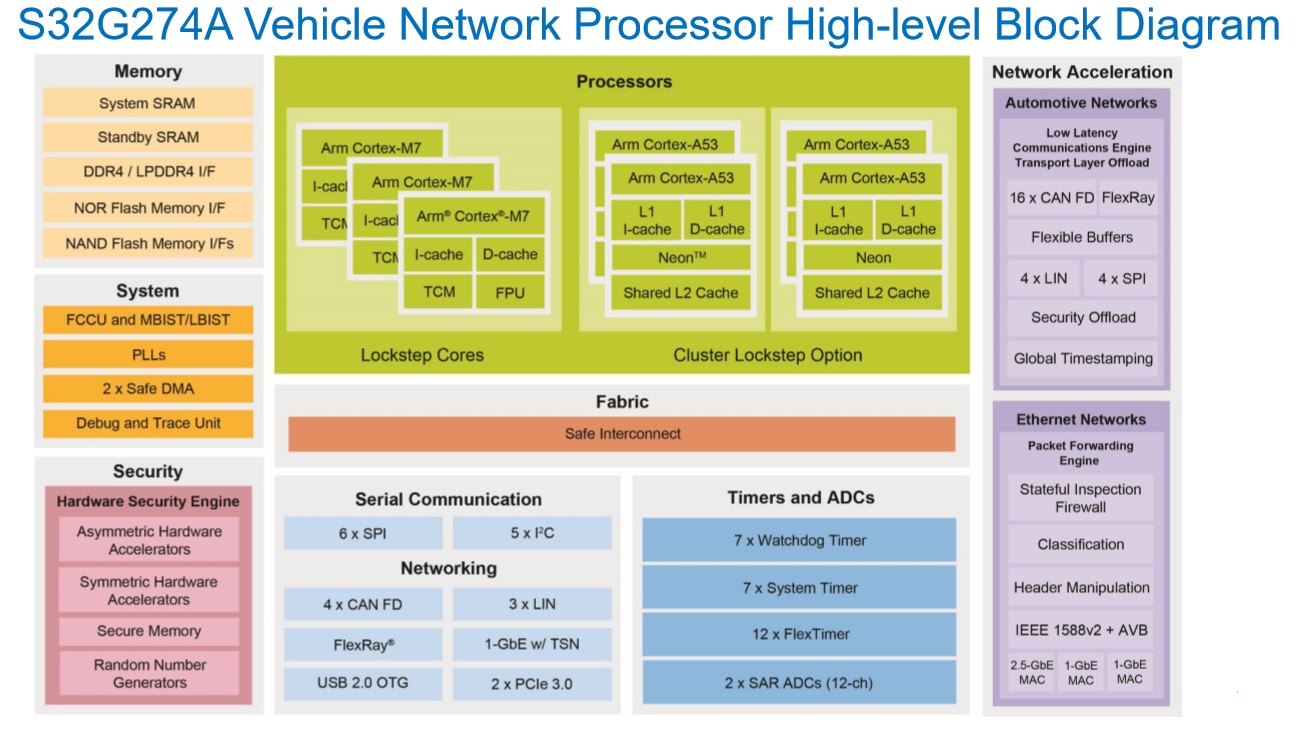 BRIAN SANTO: I’m Brian Santo, EE Times Editor-in-Chief, and you’re listening to EE Times On Air. This is a special edition of our podcast, with reporting live from the Consumer Electronics Show in fabulous, fabulous, fabulous Las Vegas!
BRIAN SANTO: I’m Brian Santo, EE Times Editor-in-Chief, and you’re listening to EE Times On Air. This is a special edition of our podcast, with reporting live from the Consumer Electronics Show in fabulous, fabulous, fabulous Las Vegas!
The kickoff events every year for the Consumer Electronics Show include CES Unveiled, where the show organizers highlight technologies that they consider particularly noteworthy. And an overview of consumer market trends presented by the Consumer Technology Association, or CETA. Let’s get to it.
CES Unveiled is an odd distillation of the overall show. CES at large is spread out over multiple huge convention center halls and spills out into the convention facilities of nearby Vegas hotels. The sheer size of this show can be bewildering, but at least it’s organized. Audio systems here, video systems there, smartphones over yonder, agricultural electronics in the back forty. CES Unveiled, however, is a themeless grab bag of all of the above and more, smooshed together in one vast hotel meeting room which, year after year, is never properly air conditioned. On the plus side, the grub at the event is pretty high class, especially compared to the hash that conventions normally sling at the media. Reporters have no time to be picky about food at these events, so it’s notable when we’re being fed well. On the other hand, it’s also possible that reporters have no inclination to ever be picky about food, but that’s an issue for anthropologists.
Even a “best of” distillation of CES is enormous and impossible for one person to cover thoroughly. So we resolved to divide and conquer CES Unveiled with our buddies Jim McGregor and Kevin Krewell from TIRIAS Research.
Okay, so we just walked through CES Unveiled, where they show the hippest, coolest, newest stuff. And Jim has been crawling through it for plus two hours, and he’s going to tell us about the coolest things he’s seen in there.
JIM McGREGOR: Well, it’s kind of interesting, because I’ve been through it two hours and I’ve only gotten through half of it. Some of the same old stuff you kind of expect: applications, you know, smartphone handles and stuff like that. But there are a few really cool companies that are doing some cool stuff there. There’s one chip startup that’s doing a Bluetooth solution, Atmosic.
BRIAN SANTO: Yeah, so it’s a Bluetooth energy harvesting, right?
JIM McGREGOR: Not only doing Bluetooth, very low power Bluetooth, but they’re doing energy harvesting with RF signals, with light, with thermal and with motion. So actually theoretically, you could have a Bluetooth connectivity connected to a sensor with no battery.
BRIAN SANTO: I talked to this guy, he said that you can even like create like a switch, like a light switch. You can just plug it in anywhere and just the process of switching will power it enough to actually go, right?
JIM McGREGOR: Oh, yeah, yeah. And like motion and anything like that. Even heat. So no, it’s a very, very interesting solution. The company’s been around for a couple of years, but this whole energy harvesting is kind of a new aspect on it. And I only know of one other company that’s trying that. So this is… I think that’s a really cool area, especially for IoT devices.
BRIAN SANTO: So if it works, it’s a bit of a game changer, right?
JIM McGREGOR: Oh, absolutely. You know, when you’re thinking about every place you’re going to be embedding sensors and you want wireless connectivity, even in a home. Think about the possibility of putting sensors in just about anything and having connectivity. It could be a huge game changer. Not to mention wearables, medical, you name it. There’s a whole bunch of applications for it.
BRIAN SANTO: So what else did you see while you were walking around inside of CES Unveiled?
JIM McGREGOR: Well, I’ve been looking at some of the products, and I’ve seen a few cool ones. There’s one company, Max Pro, that’s actually got a portable exercise system that actually fits in your backpack, and you can do hundreds of exercises with it and connect it to, obviously, your smartphone to actually track everything and everything else.
BRIAN SANTO: So the electronics element, is it just the connectivity with your phone so that you can track? Or is there some other electronic element?
JIM McGREGOR: Actually, there is another electronic element, and that’s in the system itself. The system itself only weighs nine pounds but has to simulate being able to do 150 on both sides. So it actually has to simulate the tension. So there’s actually electronic control units inside the device.
BRIAN SANTO: Oh, that’s wicked cool!
JIM McGREGOR: There’s also a company that’s actually doing… and they’re actually called Vinyl Recorder. They’re actually doing vinyl recording where you can transfer a CD audio to vinyl.
BRIAN SANTO: That’s really wicked cool! So do you have a turntable?
JIM McGREGOR: I have a turntable, I have hundreds of records and I have a 17-year-old that’s a rock DJ. So yeah.
BRIAN SANTO: How about you, Kevin? You got a turntable?
KEVIN KREWELL: I do. In fact, I recently got a disk cleaner to clean my vinyl. I’ve got lots of vinyl.
BRIAN SANTO: Beautiful. Somebody just gifted me a 180 gram version of The Beatles’ “A Hard Day’s Night.” I am so happy. It’s beautiful. So we talked about CES Unveiled. Do you have anything else?
JIM McGREGOR: There’s one other one I saw called Zero Energy, and they’re kind of in the early stages, but they basically have a little plug in. So you plug your plug from your appliance, your light, your TV, whatever, into this, and it plugs into the wall. Now, doesn’t seem like much, but it’s basically your surge protector. You know the one that you plug all your electronics into that you’re supposed to turn off so it doesn’t suck energy but nobody ever does. Well, this automatically does it. It just senses the power level so that it actually turns off the energy to all your appliances when you’re not using them.
BRIAN SANTO: Very cool.
KEVIN KREWELL: How does it know when to turn it back on?
JIM McGREGOR: Whenever it senses that there is a power surge or a request.
BRIAN SANTO: All right! So this CES in the past… last year it was pretty heavy automobile-oriented. And from what we were talking about earlier before we actually turned on the recorder, it’s going to be that again this year, right?
JIM McGREGOR: Oh, absolutely. Over 50% of the press conferences over the next two days are automotive-related. And we’ve already been briefed on some of the announcements coming up. CES has become the primary show for automotive technology, especially with electric vehicles and autonomous vehicles coming to market.
BRIAN SANTO: So that’s kind of… it kind of is a sign of how the automobile industry is changing, not necessarily the consumer electronics business, right?
JIM McGREGOR: Absolutely. I mean, you gotta think about it. The electric vehicle is really not much more than a smartphone. It has sensors, it has processing, it has a battery pack. It’s a smartphone. And then when you think autonomous vehicles, basically a super computer. It’s the smartphone with a bunch more sensors and a lot more processing.
BRIAN SANTO: And wheels. Kevin, you actually went and saw Byton today. Tell me what you saw there.
KEVIN KREWELL: Speaking of turning your car into a smartphone, Byton turns it up to 11. The car has a huge display across the entire front cockpit, as well as there’s a tablet that’s mounted right to the steering wheel, with soft functions that can change over time. The cockpit display can be used for not just information like speed and that, but it also will put up other personalized information like your appointments for the day. As well as, if you’re stopped, it will allow you to go into office mode, and the office mode allows you to do video conferencing from your dashboard with multiple sources. Built in is 4G that they can upgrade to 5G. The car customizes itself to you when it recognizes you when you get in the car. It maps who you are, gives you a personality, your charts, your appointments, places you’ve been to and where you want to go to.
BRIAN SANTO: And it can actually shift the seating arrangement, right?
KEVIN KREWELL: Yeah. You can turn it around like a bucket seat. I mean, it’s actually set up for autonomous driving. But it’s not a true autonomous driving solution yet. This is the first generation part, the M-Byte, which is… even the name is b-y-t-e, like bytes as in digital. So I mean they’re really telegraphing that this is a completely digital platform that they are doing. It’s obviously an electric car, and most of the manufacturing is in China, but they partnerships with companies in Japan, partnerships with companies in Korea. The funding comes from all over the place, but I’d have to say most of it did seem to come from Japan. But they are looking at it as an international company. They have a facility in California, Santa Clara, and they have a design area in France. So they really consider themselves an international car company.
BRIAN SANTO: And Jim, you actually got to ride in an autonomous vehicle, right?
JIM McGREGOR: I did. But the announcement doesn’t come out until tomorrow.
BRIAN SANTO: So we’ll cut that, right?
JIM McGREGOR: No, no, no! Actually, this is interesting. Just going over the list, talking about automotive press releases, I mean, ZF, Bosch, Snyder, Continental, Qualcomm (yes, Qualcomm), Valejo, Toyota, Forencia (I think that’s right), Hyundai Motors are all going to be talking about automotive announcements tomorrow. So one of those companies has an autonomous vehicle here that I’ve already ridden in. I can’t tell you who.
BRIAN SANTO: Other products I saw at CES Unveiled included an electronic braking system for in-line skates. Electronic headsets designed to help fitful sleepers get a better night’s rest. Sleep devices is now a well-established category at CES. And I also saw a portable speaker that is roughly the size of two smartphones stacked on top of each other, but it expands sort of like one of those silicone kitchen colanders so that it’s roughly four or five smartphones thick. Having a larger cavity creates greater resonance for more ample sound.
But we know what engineers really like. I found the smallest combination digital multi-meter oscilloscope I have ever seen. I met the CEO of Pokit Innovations, and I asked him to introduce himself and tell us about the product.
PAUL MOUTZOURIS: So my name’s Paul Moutzouris. I’m the founder of Pokit Innovations.
BRIAN SANTO: So what we’ve got from Pokit Innovations are a couple of portable multi-meters. And the first one that I’m looking at, the first one that’s hit the market, is roughly the size of a luxury wristwatch. The other one is kind of a large pen. Tell me about the first one, which you’re already selling, and then I’ll ask you about the new one that you’ve got and the differences between.
PAUL MOUTZOURIS: Yeah, sure. So the first one’s called Pokit Meter. And what it is, is it’s a multi-meter oscilloscope and logger all in one. So it’s not just a multi-meter, it is a full-featured multi-meter with AC/DC current voltage. But as well, you can display the waveforms, pinch and drag those waveforms. So what it is, it’s really small. It has retractable leads. It allows you to take measurements. And it connects to your phone. So the measurements and the waveforms are displayed on your phone. It can also be a logger for up to six months. So you can put it away, take your phone away, come back later and retrieve all the data, upload it to the web.
BRIAN SANTO: And it’s a Bluetooth connection to the phone, right?
PAUL MOUTZOURIS: Absolutely. Wireless Bluetooth. The device is fully wireless, and its wireless connection to the phone, which is also wireless, so you’re completely portable. You can measure things anywhere, which is really what it’s about. But the new version, which is called Pokit Pro, which we just finished a Kickstarter in October, it raised 750,000 or more, and it was the highest funded DIY project in Kickstarter history, which we’re very surprised about I suppose. But I guess we realized it’s found a little bit of a place in the market. Its main difference is, it’s a full 600 volt Cat 3, where the original is a low voltage. The second version, the Pro, is also multi-channel and has some additional measurement capabilities. That’s why it’s a little bit bigger, because it does have to be able to be sticking in the mains power point. But other than that, it’s still fairly compact.
BRIAN SANTO: So the first one, the smaller one in the Pokit meter, that’s… what kind of battery power is that? And what’s the difference with the Pro?
PAUL MOUTZOURIS: So the Pokit meter has got a battery cell in there, like you get from the supermarket. The Pokit meter, because it’s got real-time acquisition and multi-channel, it needs a little bit more power. So we made it rechargeable. It’s a more premium product, it’s more of a professional product. But look, both of these products are equally as accurate, it’s just the measurement range is higher on the Pro. And what they’re really doing, if I could explain, is they’re consumerizing something which is traditionally only for engineers. Big, bulky, expensive equipment: multi-meters, oscilloscopes, big bricks of things that you can’t take away from your bench. You’re stuck there. You’re limited in your creativity. Now you can go anywhere with these guys, and they ft in your hand, you can put them in your pocket, and you can really take your creativity to new places.
BRIAN SANTO: Okay, let me get into some of the nuts and bolts. Can you describe the processing power that you have in the meter? And then what the difference would be with the new Pro that’s coming out.
PAUL MOUTZOURIS: So look, the processing is actually equivalent in both of the units. The difference is that the Pokit Pro, because of its high voltage Category 3 ratings, has to have a lot more front-end on it to deal with the transience in the high voltage capabilities. The Pro also has acquisition buttons, and it has a torch integrated in there. So it’s not so much about the processing power. The measurement core is similar. It’s just that the Pro has a lot more bolted on to give it that extra accuracy and range that it has.
BRIAN SANTO: So how accurate is it, and what gives it the accuracy?
PAUL MOUTZOURIS: So to give you an example, we had a… some of our backers in our original Pokit Meter product are more fanatical than we are. And what they actually did was, one guy took it and pitted it against a Seven Series Fluke. So I think that’s a $700 multi-meter. It’s a premium, right? He tested every single range. I mean every single range. And he came back and said it’s actually better than the Fluke. Now obvious the Fluke is doing high voltage, which is what the Pro does, but the meter in its range was better than the Fluke, even though the Fluke is probably about ten times the price.
BRIAN SANTO: Okay, so let’s talk about price then. The Pokit meter is how much? And the Pro will go for how much when it comes out?
PAUL MOUTZOURIS: Well, at the CES show, we are providing a promotion, which means that you can get the Pokit Meter for 71 US dollars shipped to your door. You can actually get that on our shop right now. The Pokit Pro, it’s the first time we’ve shown it in public. We’ve just sold 10,000 pre-orders. We’ve got more pre-orders going. It will ship in June. The development team is still finessing that. It’s selling for $95. So they’re both under $100. And the Pro, I can assure you, will be as accurate as the Fluke, which is at $700. And it’s got the waveforms, don’t forget that.
BRIAN SANTO: Fantastic. Thanks, Paul.
PAUL MOUTZOURIS: No problem.
BRIAN SANTO: Nitin Dahad is based in London, but he’s also here at CES. He sat in on the CTA’s annual review of upcoming technology trends. Here’s Nitin’s report.
NITIN DAHAD: At the opening of CES 2020, we heard from Steve Koenig and Leslie Rohrbaugh of the Consumer Technology Association, what are the key trends to watch for in 2020. And some things were not surprising for EE Times’ audience. Others may be something new. So in summary, he talked about more intelligence in devices, electrification of vehicles and digital health being the top tech trends to watch for. So digging deeper into that, I think we’ve always talked about embedded intelligence because of the vast amounts of data and a lot of artificial intelligence that needs to go into devices to sort of make sense of that data. And so I think what they’re saying is, there’d be more connected intelligence and more consumerization of AI. In other words, a lot more of this going into everyday objects. And an example was, in CES Unveiled I saw an AI toothbrush from Oral B. So, you know, what Steve was saying was, the last decade was about the Internet of Things. But now, we kick off a new decade defined by the Intelligence of Things. And that really says it all.
But the other thing that he was already talking about was transport and mobility. And he said electrification is going to be the big thing, both in 2020 as well as over the next decade, just because of new innovations in battery technology and charging infrastructure and charging models, business models rather. So he was saying that we’ve really come to a point of inflection in electrification and electric vehicles. So that’ll be the big story for CES 2020.
The other big one is digital health. I’ve seen, as you’ll see in the CES Unveiled reports, a lot of smart wearables for health and health monitors and blood pressure monitors. So that’s going to be the other big thing.
Overall, I think what we’re seeing is really all playing into more connectivity with 5G and also enabling of more intelligence in lots of devices.
BRIAN SANTO: So there’s our rap for the first day of the 2020 Consumer Electronics Show. EE Times On Air will include daily podcasts from the Consumer Electronics Show, with episodes today, tomorrow and the next day. We’ve also got coverage on a special site set up specifically for the CES 2020 show. Check it out on ces.eetimes.com. That’s ces.eetimes.com. Also this week, we’re going to skip our weekly review podcast, which we normally do on Fridays. The weekly review will resume the Friday after next.
Thanks for listening today, and check back with us tomorrow for more from CES 2020. This podcast is produced by AspenCore Studio. It was engineered by Taylor Marvin and Greg McRae at Couple Studios. The segment producer was Kaitie Huss. The transcript of this podcast can be found on eetimes.com. Find our podcasts on iTunes, Spotify, Stitcher or Blubrry. I’m Brian Santo.






